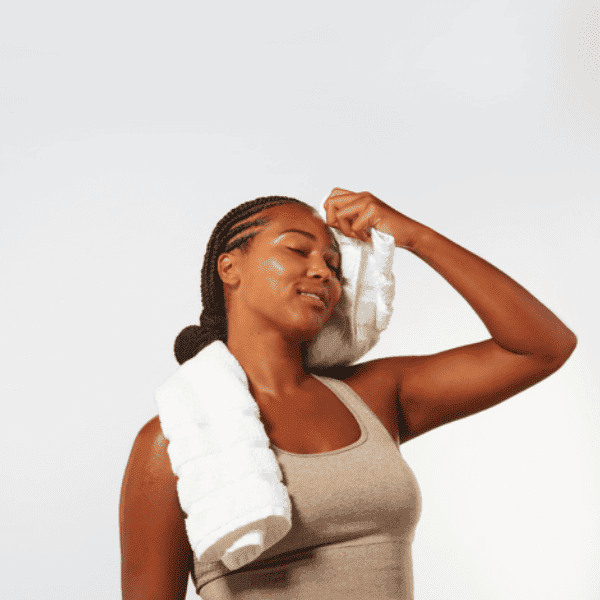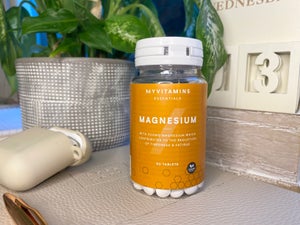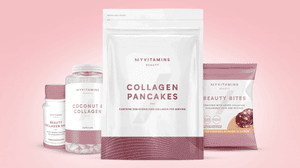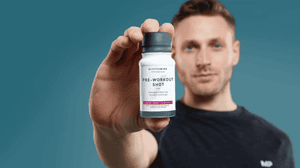
Regardless of age, every woman goes through hormonal fluctuations which impact mood, appetite and fitness ability. Our nutritional and lifestyle habits play a huge part in this, and with right routine, we can work with these hormonal changes rather than against them.
Whether you're struggling with PMS or feeling overwhelmed with menopausal symptoms, these tips and tricks can help you thrive all month long...

The 4 Phases Of Your Menstrual Cycle
1. Menstruation
Your period indicates the start of your follicular phase. Day 1 of your cycle is counted as the first day of your heavy flow and bleeding usually lasts between 3-7 days.
Symptoms: Women usually fall into 1 of 2 groups during this specific week; the first group feel tired, withdrawn, pain sensitive and emotionally fragile. The second group may feel energised and experience a sense of relief.
Diet: Focus on warming soups, stews, dark leafy greens, root vegetables and healthy comfort foods. Foods or supplements rich in iron will help to replace any iron lost during your period. At this time, do your best to limit caffeine as it can make symptoms feel worse. Instead, try natural sources to keep you awake including B vitamins.
Exercise: Even if you feel a rush of energy, it’s not always the best idea to expend it right away. If you retain the energy at the beginning of your cycle, it will better serve you throughout the rest of the month. Don’t overdo things in this phase, focus on walks, yoga and stretching.
2. Follicular
After your period has finished, your follicular phase continues to get your body ready for ovulation.
Symptoms: You are at your most fertile at this stage (before ovulation), and you can feel pretty good, as oestrogen is high boosting your mood, sleep, skin and libido. Serotonin and dopamine are higher than normal.
Diet: Focus on protein and cruciferous vegetables (broccoli, cauliflower, cabbage, kale) for good detoxification, and seeds like flaxseed and pumpkin to support oestrogen balance. Include foods rich in B vitamins (meat, fish, eggs, dairy, legumes, grains) and vitamin E help to support a healthy ovulation.
Exercise: Start to build energy during this time of the month by trying out new classes, engaging in more social types of exercise like dancing, or simply get really into your regular routine. Your energy is good so this is a great time to up the intensity and try some HIIT or heavier weights.
3. Ovulation
In this short 1-2 day phase, one of the racing follicles reaches the finish line and triggered by a surge of Luteinising Hormone, releasing the egg. The egg is swept into the fallopian tubes and will either be fertilised by sperm or it will break down. Even if you’re not trying to get pregnant, ovulation is important because it’s the main source of oestrogen and progesterone.
Symptoms: If you ovulate, some women feel a twinge of pain or sensation as the egg is released.
Diet: Focus on anti inflammatory foods rich in antioxidants to support healthy detoxification (green leafy veg, berries, herbs/spices, nuts, seeds, olive oil, garlic, beetroot etc).
Exercise: Relish in feeling and looking great in whatever kind of exercise you decide to engage in. Your energy is still good so keep going with the more intense exercise and maybe a group class for extra social connection.
4. Luteal
After ovulation you enter the luteal phase which lasts around 12-14 days. The follicle left behind after ovulation forms a new gland called the Corpus Luteum. This is where progesterone is made and this hormone is very important. It helps you sleep, reduces anxiety and balances out oestrogen. If there’s no pregnancy, the Corpus Luteum breaks down and oestrogen and progesterone will fall rapidly, stimulating the breakdown of the uterine lining.
Symptoms: During this phase, if you don’t have enough progesterone (or too much oestrogen), you can feel typical PMS symptoms which can include low energy, low mood, irritability and bloating.
Exercise: Your energy may dip so take it easier on the exercise. Start to wind down the social and heavy work, make sure you get enough good quality sleep and relaxation. Long baths with magnesium rich Epsom Salts are great in this phase. Gentle stretching can work wonders too.
Diet: Eat plenty of healthy fats and protein to curb cravings. Aim to eat plenty of fibre and keep well hydrated. Try sunflower and sesame seeds to support progesterone balance. Foods rich in magnesium in green leafy vegetables, nuts, seeds, dark chocolate can help with any excess stress or pain. Supplements can help too (magnesium, omega 3 DHA/EPA.) If you have PMS symptoms or very heavy or painful periods, try avoiding dairy products throughout the month to see if it helps.
Menopause
Menopause is a point in time 12 months after a woman's last period. The years leading up to that point, when women may have changes in their monthly cycles, hot flushes, or other symptoms, are called the menopausal transition or perimenopause. The menopausal transition most often begins between ages 45 and 55.
Exercise: Regardless of fitness level, exercise for women in their forties onwards is different than in our twenties and thirties. Physical changes, such as slower metabolisms, hormone changes during perimenopause and menopause, and the higher risk of developing heart and bone issues in this time of life all make it important to take a closer look at best practices for fitness. Midlife is the time to move, strengthen muscles, and stretch more.
Diet: Focus on protein and go lower carbohydrate, so that your blood sugar isn’t fluctuating too much. This can stave off the worst of the hot flushes, and will also help with mood swings. Take vitamin D and calcium supplements, and omega-3s – the first two for bone health, since type loss of oestrogen can cause osteoporosis, the third for mood.
Tracking Your Cycle
Every woman's body is incredible but completely unique. There are so many complex and moving parts to make this cycle happen so it’s not surprising that every woman will have a different experience.
It is important to track your cycle and monitor your symptoms and feelings for any patterns. Cycle tracking apps can be really helpful for this (or just use a calendar.)
In Summary
When you start tuning into your cycle, you will notice that you feel differently at each stage. This often depends on your hormone levels. By regulating your exercise regime after noting how you are feeling throughout each month, you can actually improve your sense of wellbeing and increase your athletic performance.
Once you understand your own phases, you can experiment with syncing your daily life and find what works for you. Be patient, it may take some time to work out what helps and what doesn’t.








